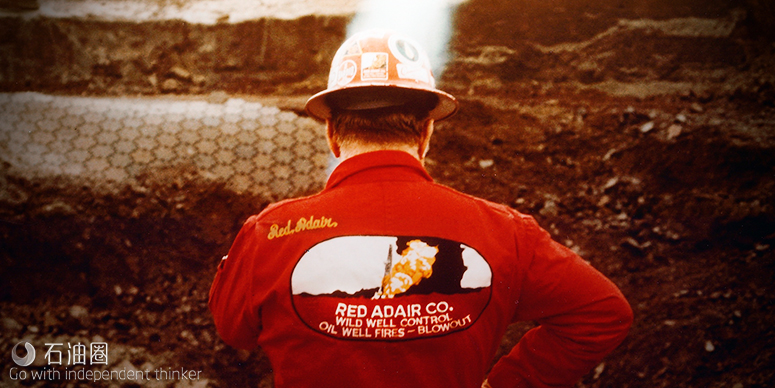Remediation of zonal isolation failures, such as cement microannuli, can be costly and challenging to execute. The Wild Well ControlSEAL resin compound, developed with CSI Technologies, offers a long-term zonal isolation solution for Permian Basin operators.
ControlSEAL’s effective barrier alternative outperforms conventional cement for compressive strength, tensile strength, and shear bonding. It maintains its durability using a nonshrinking, corrosion-resistant, and impermeable design.
Laboratory testing shows that ControlSEAL resin has a 400 percent increase in shear bond when compared to conventional cement.
ControlSEAL is a bipartite system consisting of an epoxy resin and a chemical hardener. Unlike previous oilfield sealants, it is impervious to water contamination and will not dilute. It freefalls through water and reforms in the zone of interest.
ControlSEAL is an improvement over the relatively large particle size of Portland cement. Because of the latter’s large size compared to a microannulus, it is difficult for Portland cement to penetrate far enough to create an effective seal. Some sealing issues simply cannot be remedied with conventional cement.
ControlSEAL resin can be squeezed into channels/leak paths that are unreachable by Portland cement, creating impermeable adhesion in minutely small geometries, such as those existing in leaking DV tools, connections and difficult-to-seal perforations.
With its solids-free formulation and revolutionary fluid versatility, ControlSEAL resin is able to squeeze deeper into a microannulus to create a stronger seal, eliminating the need for repeating remedial cement jobs.
Because ControlSEAL has a Newtonian Flow Profile with a rheology, optimized for flow diversion, the resin compound can be easily mixed onsite and pumped with conventional cement equipment. And despite its durable form, ControlSEAL can be drilled out with standard drill bits.
Featured in E&P Magazine and as a recipient of the OTC Innovation of the Year Award, ControlSEAL has a field-proven track record that spans more than a decade. Whether on land in the shale play of West Texas or in the high-temperature, high-pressure deepwater fields of the Gulf of Mexico, ControlSEAL outperforms standard cement for applications such as:
Performing remedial squeeze jobs
Consolidating weak and permeable formations
Sealing gas leaks, leaking packers, and valves
ControlSEAL is an engineered high performance resin sealant developed for challenging well interventions, integrity recovery, and final well abandonment. The unique fluid and mechanical properties of ControlSEAL provide access, adhesion, and high differential barrier construction in the most difficult, hard to reach well treatments. Wild Well engineers specially design the ControlSEAL formula to meet individual well requirements, develop exact placement procedures, and oversee operations to ensure project success.
Features and Benefits
- Outperforms conventional cement for compressive strength, tensile strength and shear bonding
- Maintains long term durability using nonshrinking, noncorrosive and impermeable design
- Infiltrates microannuli and formation with solids-free design to create effective barriers
- Mixes and pumps easily on site: no special additives or water required with conventional oilfield equipment
- Remains stable even in hostile downhole conditions
- Stays intact while dropping through water, seawater and brines, reforming at the target zone
- Penetrable during perforation while maintaining form and integrity
- Tolerates temperature ranges of 40 to 275°F and densities ranging from 7 to 19 ppg
- Suited for offshore and onshore environments
Applications
- Casing installation
- P&A operations
- Leaking production packers
- Control lines, gas leaks, valves and wellheads
- Remedial squeeze jobs
- Water flows and gravel packs
- Weak, permeable formations
- Isolation of adjacent wells
A client was encountering problems with a leaking production packer on their well. They were experiencing communication between the tubing/casing annulus and had made several unsuccessful attempts to resolve this issue. The leaking packer was preventing the well from being put on production. There was a ¼-in. hole in the tubing at 7,506 ft (18 ft above the packer). Although not originally planned for, this hole was being used for gas-lift purposes. The annulus would not hold a full column of seawater, leaving about a 1,000-ft void in the annulus.
ControlSEAL Resin Sealant Job A total of 20 gal (approximately 15 ft of fill) of 16 ½-lb/gal ControlSEAL™ was pumped into the annulus and allowed to freefall to the top of the production packer, essentially locking the tubing in place and sealing the annulus so gas-lift production could resume. There were three issues that had to be dealt with on this job. First, there was a freefall from the tie-in point of the annulus to the seawater line in the well at about 1,000 ft. The second was approximately 6,500 ft of water in which the ControlSEAL would have to fall through to land on top of the packer. The third obstacle was the ¼-in. hole 18 ft above the packer in the tubing. It was absolutely critical that the ControlSEAL not cover the ¼-in. hole and fall into the tubing. This is the reason that only 20 gal of resin was used. The job began with the pumping of 3 bbl of seawater into the annulus to wet the outside of the tubing and the inside of the casing over the 1,000 ft of void area. The 20 gal of ControlSEAL was then mixed and pumped into the annulus, immediately followed by 5 bbl of seawater. Five hours were given to allow the ControlSEAL to fall to the top of the packer, followed by 24 hours of waiting to allow the resin sealant to harden.
After 24 hours, a positive pressure test of 500 psi (3,480 psi experienced at the top of the ControlSEAL plug) was performed and passed, revealing that the ControlSEAL had set against the top of the packer and sealed the annulus. Prior to the application, more than 1,100 psi of pressure at the packer seal would create leakoff. The ¼-in. hole was also deemed to be free and clear in this test.

 石油圈
石油圈
